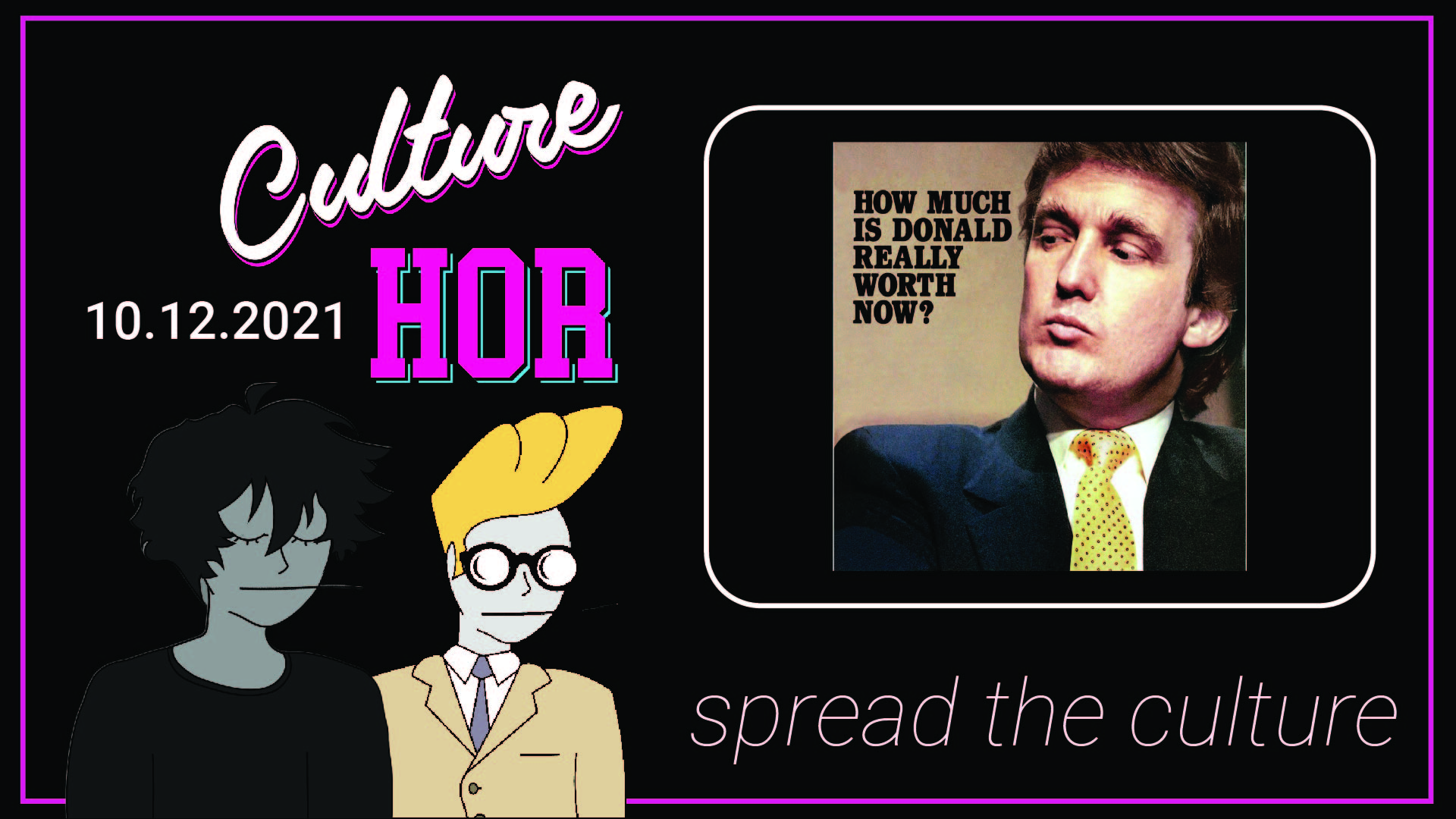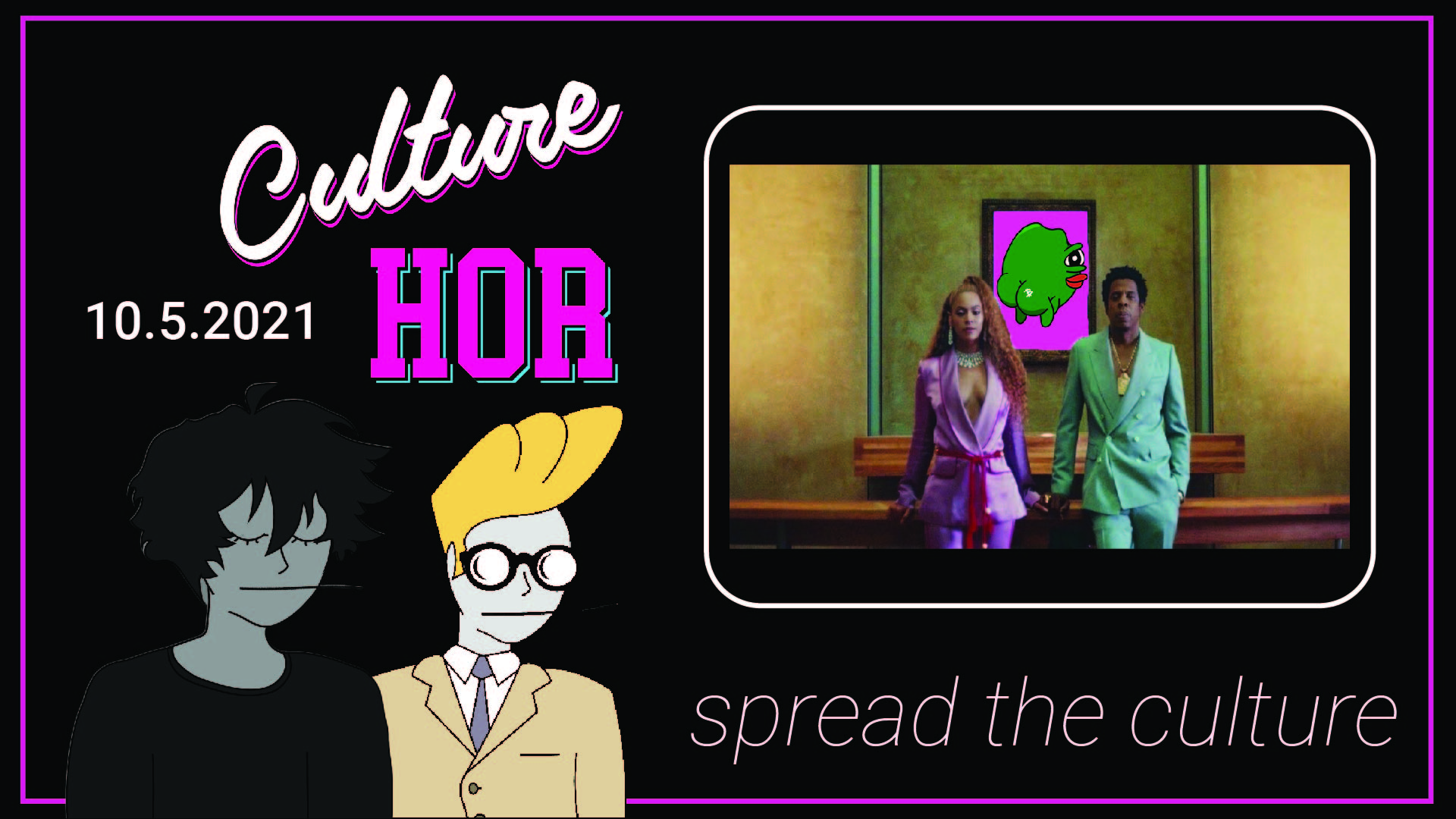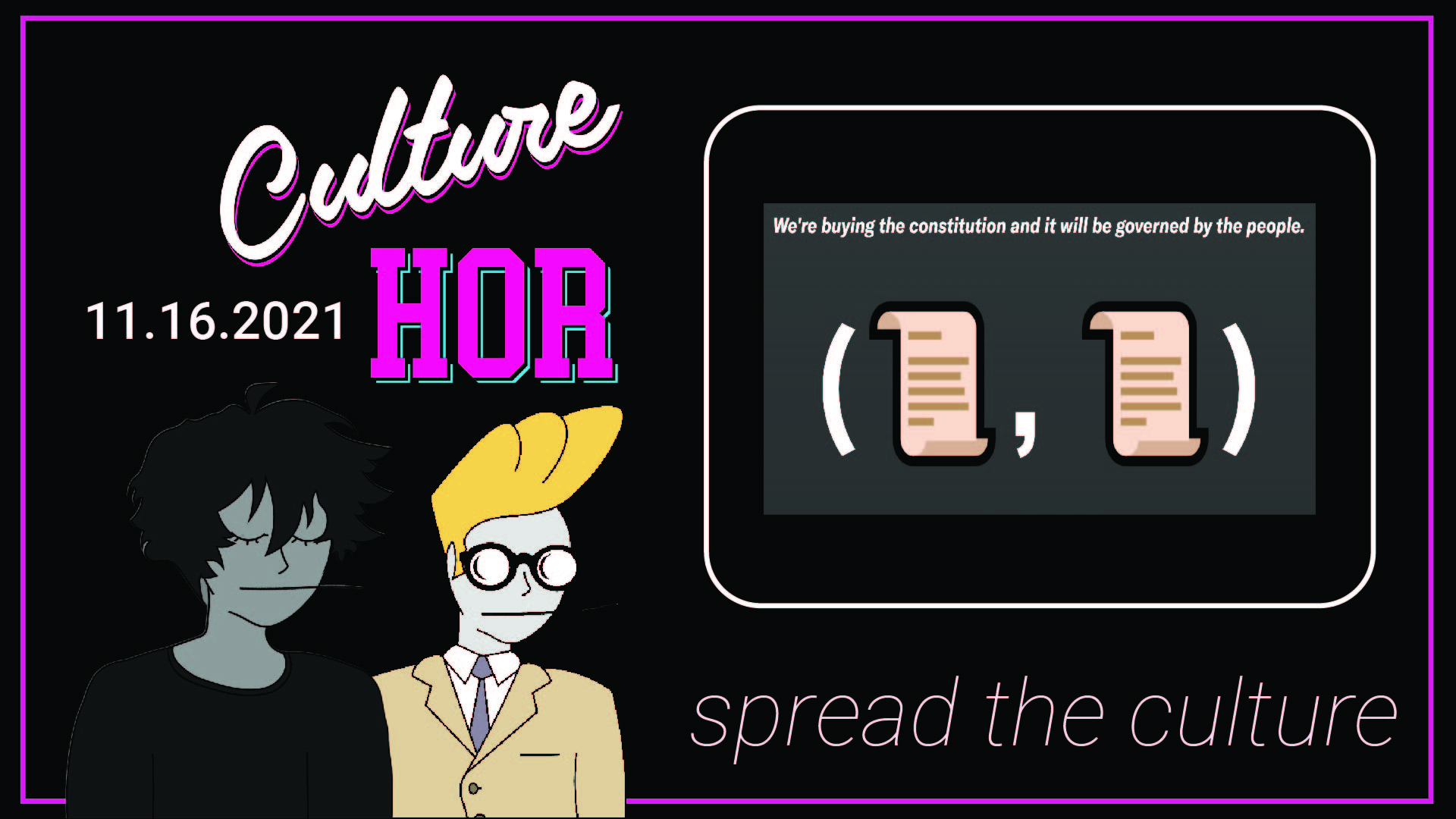Sick of the same two belligerent disembodied voices waxing poetic about everything important on the Internet? You’re in luck. It’s three now.
Markets
(Price changes reflect past 24 hours as of 5.26.22 @ 4:20 PM EST.)
- Just when you thought it was safe…

New web, who dis?

We are constantly surrounded by identity. We have numerous identity-based categories on our IDs and passports. In addition, we click racial, gender, and ability-based identity categories on job applications and surveys. However, all of these forms of identification come with the understanding that we must present the way we identify. For example, the identity categories on your passport must match your physical appearance if you want to get on your flight. And if they don’t, there could be repercussions, like losing your ticket. Or, in the case of some LGBTQ+ international travelers, you could literally be jailed for gender identity markers not matching the way you express your gender. However, in a post-web2 world and in the emerging web3, blockchain, and metaverse industries, how will this change? When your identity is metaphysical, who are you more? The person on your ID or the person on your screen?
As a queer and nonbinary person, I am often puzzled by the question of who am I more: the version of me I feel inside or the way the world views me outside. See, to me, I am genderless. I don’t feel an affinity towards man or womanhood. I occupy some space in between and sometimes on both ends. But that’s not how the world always views me. When I had longer, shoulder-length hair, people treated me as more feminine. I was catcalled by presumably straight men, called ma’am on many occasions, and even got weird looks when I would use a gendered restroom. Then, I cut my hair. Since then, none of those things have happened to me. In fact, people have now called me sir, bro, and man more times than I can count. Now, neither being perceived as masculine nor feminine offends me. In fact, I love that I am able to be so fluid in my presentation. But the fact that something like a haircut changes what I am more to whoever is viewing me starts an interesting conversation about who I am more. The non-binary person I feel I am inside? Or the gendered versions of me people so often perceive me as?
To the government, I am a male, as that was the identity marker given to me at birth. To my queer friends, community, and myself, I am genderless, nonbinary. And to the casual viewer on the street, I am whatever they view me as. Man, woman, f*ggot.
However, not everyone has the confidence, luxury, or ability to be out and proud about their identities. In many parts of our country and the world, people who are pining for the ability to escape strict gender and sexuality roles are restricted because of a regressive culture. Often times signs of gender or sexual diversity are met with violence, hate, and death. In these parts of the world, you are more of your sexuality or your gender than you are human.
So what do these people who are restricted by culture do to finally experience life as their gender or sexual identity? They go to the Internet. Since web1, LGBTQ+ people like myself have been using the Internet as a tool to escape the entrapment of physical identity. They have used the Internet since the beginning to seek out media that validates them, connect with people of their communities via chatrooms, and finally be viewed as they want to be viewed.
These are perhaps the first group of people to see themselves more as their metaphysical identity than their physical one. The first group to see the Internet as a mode of escape, an avenue of identity, and means of experiencing gender euphoria.
Web2 saw this phenomenon skyrocket. Teens and young adults questioning their identities now had a decade’s worth of online communities to engage with and learn from. The practice of displaying your pronouns on your profile became widespread and people could create whole online identities that matched their true identities.
Of course, web1 and web2 were still heavily influenced by physical identity. Most people who use the Internet to live out their real identity metaphysically still return to the real world and are not treated how they wish to be. This all shows that in a web1 and web2 world, you are more of your physical identity than your metaphysical.
But web3 is different. In a metaverse where you can socialize, shop, and even work metaphysically, this precedent is bound to change. We will have to acknowledge that many people who will use the metaverse to live out their true identity cannot live that way in the real world. They will wear things that could get them in trouble in real life because it is the only place in which they can do so. To these future metaverse users, they will, for the first time, literally be more metaphysical than physical.
(This is all, of course, under the hope that the metaverse will not be policed like the real world. That it will be decentralized and equitable. That those living in the most queer and trans restrictive places will be able to access the metaverse and not fear persecution for how they wish to present in this new space.)
Identity isn’t going away. And as we expand our technological capabilities in web3, we must make sure we are creating the most just environment possible for people of historically marginalized communities. This means involving LGBTQ+ people, Black people, Indigenous people, and people of color in every step of web3 creation. Otherwise, the issues that have existed prior to the metaverse will find new ways to affect people in the metaphysical world.
After all, the metaverse, by definition, is not the real world. It is a tool. A tool that should allow people to escape the persecution faced in the real world and foster freedom from strict identity categories. It must be a place and a tool that fosters true expression and identity; otherwise, it will be nothing more than another mode of policing and repression.
Emphasis on 'cult'

Aside from being a far better writer (and far less out-of-touch with the kids these days) than us, we brought Zizi on board because we needed a little genuine optimism to offset our prevailing mood of nihilistic snark. Well, I hope you enjoyed today’s taste of hopefulness while it lasted. Because, unfortunately, for every new exciting bit of potential the technology displays, there’s always a maggot-infested flipside there to justify my lack of faith.
In the case of identity, I do believe the anonymity of web3 can be liberating for those who don’t feel free to be themselves IRL. In many cases, these people are repressed, marginalized, or otherwise misfits who deserve the equitable platform they’ve been denied for so long. In some cases, however, people hide their voice or views because they would be renounced and ridiculed by polite society en masse — and rightfully so.
Take, for example, ‘Charlotte Fang’, the founder of the Milady NFT collection. A fairly run-of-the-mill PFP, the Miladies were, until a few days ago, best known for their Y2K street style aesthetic and the ‘highly customized Minecraft server’ to which hodlers have exclusive access. Well, all that promise is gone to shit now, as it came out that Charlotte Fang is, in fact, a well-documented 4Chan troll, and the collection is packed with enough right wing dog whistles to leave a Labrador retriever stone deaf. Fang’s transgressions — dismissed as ‘trolling‘ and ‘performative net art‘ in official apologies — reportedly include ‘discussing a voting ban for black people, homosexuality as a disease, killing Jewish people and women as something to be “tamed”‘.
Those are just the warm-ups though. The bulk of ire seems to be directed toward Fang’s ties to a white supremacist movement called Kali Yuga Accelerationism, a cyber suicide cult called Systemspace, and an online culture called ‘pro-ana’ in which anons groom young users into developing eating disorders. So, like, three solid reasons for me to remain out-of-touch with the kids these days. (Ironically, Kali Yuga Accelerationism is one of the primary reasons the founders of Yuga Labs have been accused of trafficking in racism themselves.) Fang has since stepped down, but, helpfully, remains ‘more bullish than ever for Milady’. I almost certainly wouldn’t have heard of it otherwise, so, yeah, that tracks.
It’s not like extremist assholes didn’t rise to prominence in web2, or web1, or, you know, every major industry since the rise of the Western world. But it is a little baffling how often I find myself reporting on stories that hit the exact same beats as this one. A promising NFT collection with an anonymous founder meets a couple Reddit detectives who pull back the mask, and, surprise! It’s not a cute anime avatar! It’s a Nazi! I can’t help but imagine the anonymity of web3 contributes to this phenomenon. Like 4Chan before it, anonymous technology may not necessarily radicalize its user base, but it does attract the free radicals. I hope Zizi is right, and enough good actors run to web3 to remake it in their own image. But I worry the culture they’re running from beat them here.
Rising tide sinks all ships

In which we obligatorily remind you that web3’s shaping up to be a lot like the real world, after all.
- OpenSea is launching an ‘NFT marketplace protocol’ called Seaport — essentially, open-source code allowing anyone to launch their own trading platform — along with offering a $1M bounty to whichever auditor can make it most efficient. This is likely not a showing of remorse or act of self-loathing for being the most centralized compilation of fraud on the blockchain, but rather a hedge against shifting market conditions. I’d reckon the company read the same article we did and realize an unbundling of their former monopoly is imminent. (Yesterday, in fact, marked the first time a Solana-exclusive NFT marketplace outsold OpenSea.) What better way to secure relevance for your platform than making sure every future competitor’s is cross-compatible?
- 65% of critically injured gambling addicts straggling out from the rubble of the Terra protocol into the evergreen state of denial have voted to approve Do Kwon’s proposed hard fork. The new Terra blockchain will forego the whole stablecoin conceit altogether and run a new coin under the existing LUNA listing. (Currently trading at a whopping $0.0001468 after last week’s crash and/or rugpull.) I wish all new investors a modicum of street smarts, or, failing that, dumb luck. The founder’s wealth of frozen assets and 0% success rate suggest they’ll need it.
- Much like the late Grizzly Man, Marc Andreessen appears unfazed by bear attacks. VC firm and poster child of corporate crypto fuckery Andreessen Horowitz (a16z) has spent today’s press cycle inexplicably touting the $4.5B in funding they still plan to throw into web3 startups, in spite of the most prominent and profitable product of the past few days being a purposefully useless Ponzi scheme. Maybe they share our philosophy — you need to escape the spectres of price activity and trend riding for true innovation to flourish. Or, more likely, they’re taking the same approach they took during the last crypto winter. You can’t lose at the derby if you bet on every horse.



